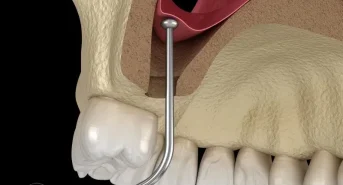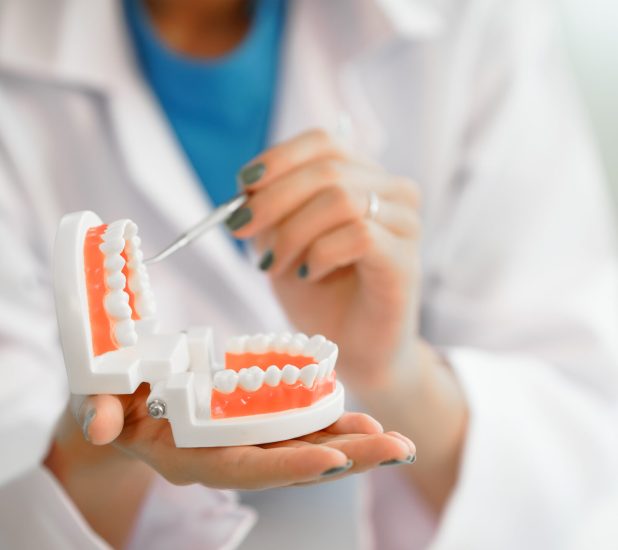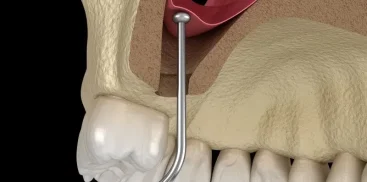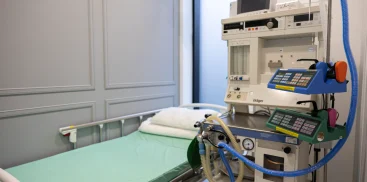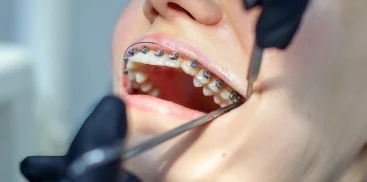Endodontic (root canal) treatment of a tooth is a procedure used in the case of inflammation of the tooth pulp, the damage of which is irreversible.
Thanks to progress in dental technology, today this procedure has a completely different character than it did a dozen or so years ago.
Modern knowledge and advanced equipment allow us to minimize pain and increase the chances of effective treatment, which means preserving the tooth for many years.
What is endodontic treatment?
Endodontic treatment involves precise preparation and cleaning of tooth canals from infected pulp using specialized tools.
Then the dentist fills the cleaned canals with liquid gutta-percha, a natural material well tolerated by the body.
When is endodontic treatment needed?
Endodontic treatment is most often necessary as a result of advanced caries, which initially attacks the dentin and then reaches the chamber and canals, where the richly innervated and vascularized pulp is located.
Infected pulp may present with severe, dull or sharp pain that is exacerbated by factors such as heat, cold or touch.
The patient may also experience long-term hypersensitivity to these stimuli and pain in the tissues surrounding the affected area.
Root canal treatment is also an alternative to tooth extraction in the case of:
- tooth cracks or fractures,
- numerous previous dental procedures,
- the presence of anaerobic bacteria,
- advanced inflammation of the tissues surrounding the tooth roots.
The endodontic treatment procedure can be performed on both adults and children, although there are some contraindications, such as hemophilia, endocarditis, some rheumatic diseases and mental disorders. Pregnant women should consult a gynecologist before starting endodontic treatment.
Endodontic treatment – step by step
Endodontic treatment begins with a thorough diagnosis by a dentist.
Interview with the patient, standard An oral examination and X-rays help identify the problem and assess the condition of the tooth’s root canals.
The procedure then includes the following steps:
- Local anesthesia that eliminates pain.
- Opening the tooth, removing caries and accessing the root canals.
- Removal of the infected pulp from the chamber and canals, their expansion using special tools and disinfection with a sodium hypochlorite solution, eliminating bacteria and the remaining pulp.
- Regularly checking the length of the canals with an endometer in order to carefully prepare them.
- Filling the canals with biocompatible gutta-percha to prevent re-infection.
- Reconstructing a tooth, for example by traditional filling or placing a crown.
- Verification of treatment effects on another X-ray.
Modern endodontic treatments are painless and comfortable for the patient.
They do not require special preparations, but it is worth eating a solid meal before the visit, because the treatment may last longer than a standard visit to the dentist.
Primary and secondary endodontic treatment
Primary endodontic treatment involves thorough cleaning of the tooth’s root system, removing infected or dead pulp.
If this procedure is performed correctly, the tooth can be preserved for many years without the risk of pain or inflammation.
However, sometimes repeated endodontic treatment is necessary, which is indicated in cases such as:
- Incorrect, too thin filling of the tooth canals, which is not visible on a regular X-ray.
- Changes at the tip of the tooth root that do not necessarily cause pain, but are visible on X-rays or computed tomography.
- Swelling or purulent fistula above the tooth, caused by bacterial infection with materials formerly used in root canal treatment.
Repeated endodontic treatment helps prevent the recurrence of diseases that may lead to tooth extraction. However, it is worth knowing that this is a time-consuming procedure and may take longer than the first one ot treatment.
The tooth is opened again, the old material is removed, and the canals are thoroughly cleaned and filled again.
Consent to endodontic treatment
Nowadays, endodontic procedures are in most cases effective in over
90% of cases.
However, the doctor cannot guarantee 100% success to the patient because the results depend on many factors, such as the structure of the tooth root, the degree of infection, the type of bacteria and the patient’s general health.
The patient must understand the increased risks and consent to endodontic treatment during the first visit.
Costs of endodontic treatment
Endodontic treatment can be expensive due to its complex nature.
High costs result from the use of specialized equipment, chemicals supporting treatment and high-quality materials to fill cavities.
For example, treatment prices start from about PLN 700 for a single-canal tooth and can reach up to PLN 1,500 for teeth with four canals.
In particularly complicated cases, such as closing a perforation, removing a broken instrument or unblocking an obliterated canal, the costs may increase significantly and the patient may need more than two visits to the dentist. At the Warsaw Dental Center dental clinic in Warsaw, the price of endodontic treatment starts with a consultation with a specialist.
The doctor not only assesses the condition of the tooth and proposes a treatment plan, but also presents the costs to the patient.
Thanks to this, the patient can prepare financially for the necessary expenses that will help save the tooth before extraction.

